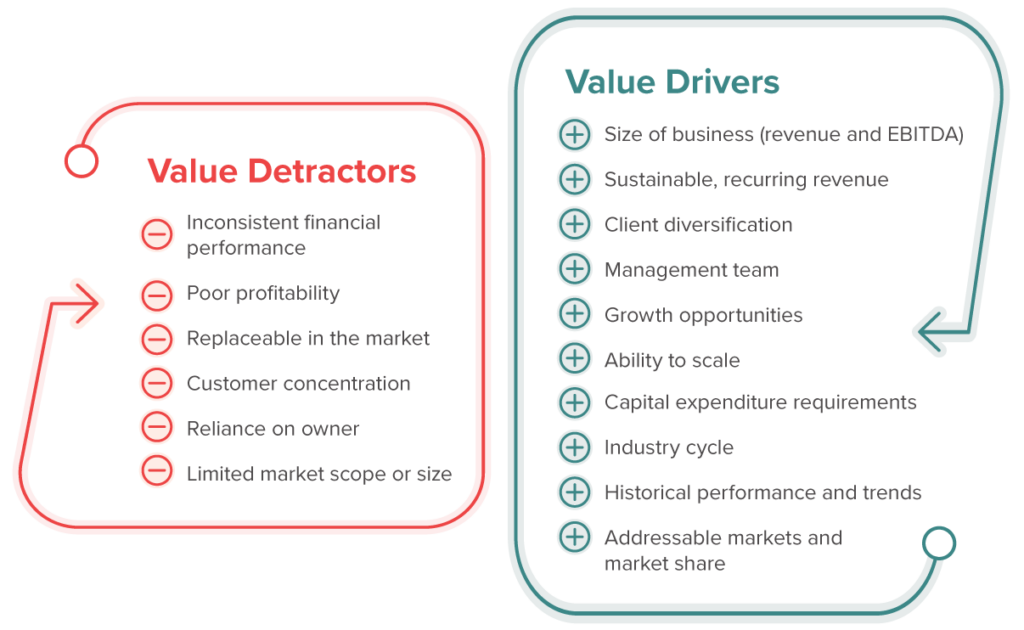Without proper planning and documentation, owners who are selling their company risk being surprised that their business valuations don’t mirror those of a buyer. These traps can occur at any point in the sales process, right up to closing.
Working with an M&A advisor can help avoid issues related to proper analysis and negotiation that otherwise could cost a seller hundreds of thousands off the purchase price post-closing. Here are four common traps that business owners can face when selling, along with maximization strategies.
- Earnings Before Interest, Tax, Depreciation, and Amortization (EBITDA)
EBITDA is one of the primary financial metrics in determining value.
- Trap: For example, if a company has a $2M EBITDA, at a 5x multiple the company is valued at $10M. If a seller neglects to identify or cannot defend an incremental $100K in addbacks, that can translate into the owner losing $500k in valuation.
- Maximization Strategy: Working with an experienced transaction advisor to ensure proper due diligence is necessary to support and defend a business’ EBITDA.
- Net Working Capital
Many structures require delivery of an agreed-upon amount of working capital at closing (e.g., a target).
- Trap: Neglecting proper analysis and negotiation could result in a negative purchase price adjustment, costing the seller hundreds of thousands of dollars off of the purchase price post-closing.
- Maximization Strategy: Working with your advisors ensures a thoughtful approach to defining the targeted amount of working capital at closing based upon a negotiated calculation. .
- Cash + Debt Definitions
Cash and debt may seem like simple concepts with little to debate, but defining and agreeing that those items will be handled well in advance is crucial.
- Trap: Excluding certain items from cash or including items in debt can cost a seller hundreds of thousands of dollars.
- Maximization Strategy: Answer the key issues well in advance, including minimum cash in working capital, how restricted cash is treated, what liabilities go into working capital versus debt, and more.
- Transaction Expenses
Identify and ensure all potential liabilities have been defined as either buyer or seller costs prior to close.
- Trap: An aggressive purchaser may try to sweep unrelated items into this category as a seller’s expense (such as pending lawsuits or severance on terminations at purchaser’s discretion post-transaction).
- Maximization Strategy: A shortfall typically requires a negative purchase price adjustment, so a thoughtful approach to defining working capital and the target is important.
To better understand these transaction traps and to ensure you maximize the value of your business in a transaction, reach out to Aldrich Capital Services.

About Aldrich
Aldrich Capital LP provides advisory services for business transactions, including succession planning, acquisitions, or mergers. We help business owners navigate challenges and unlock growth opportunities with actionable insights. Our innovative team is dedicated to your success.


